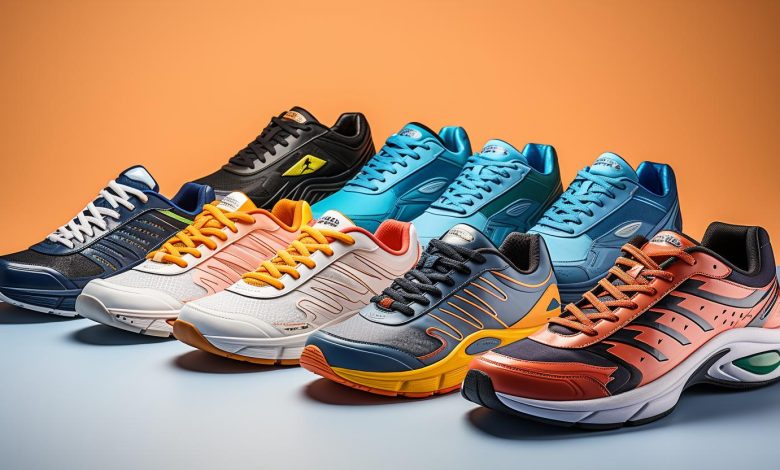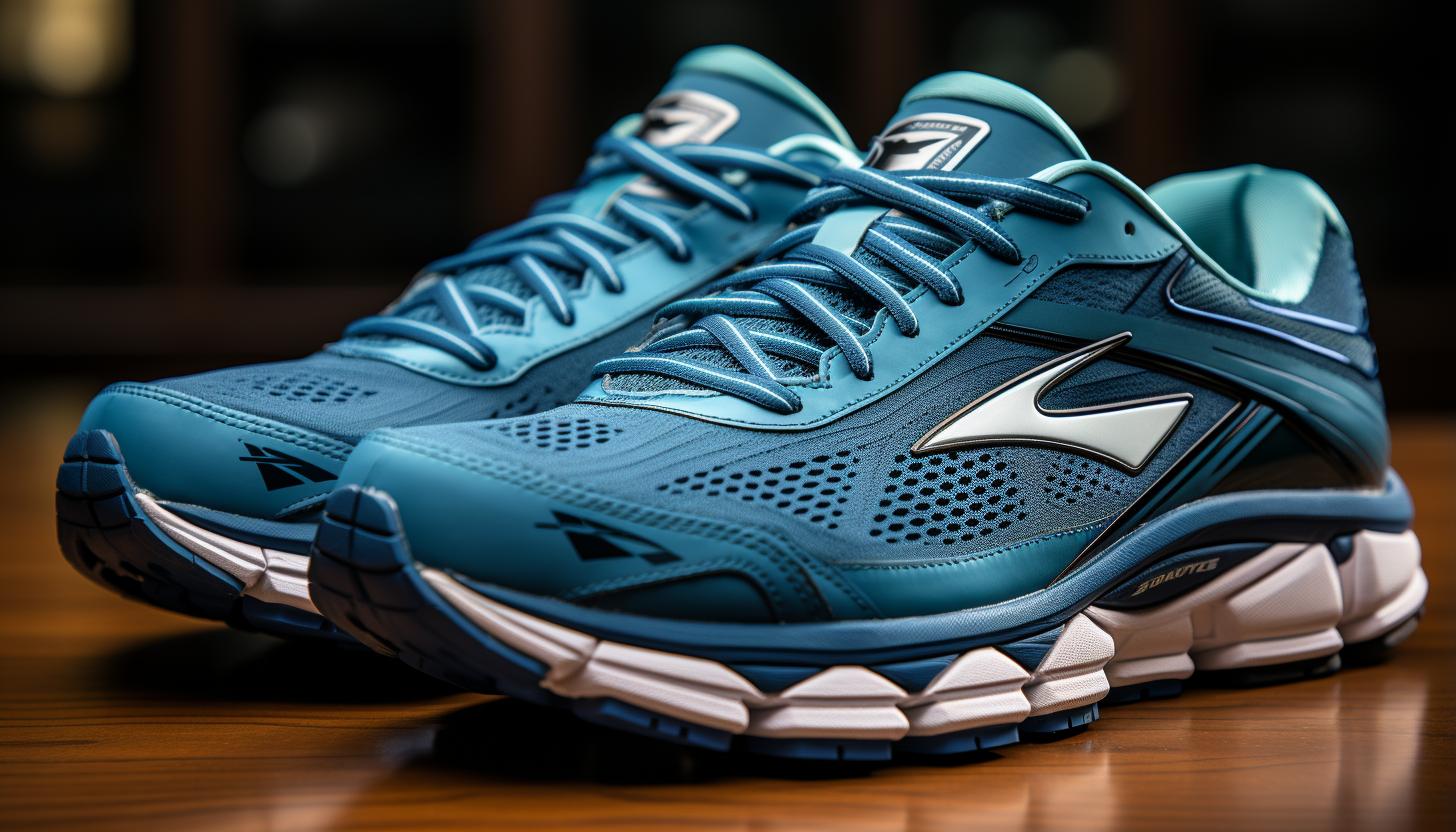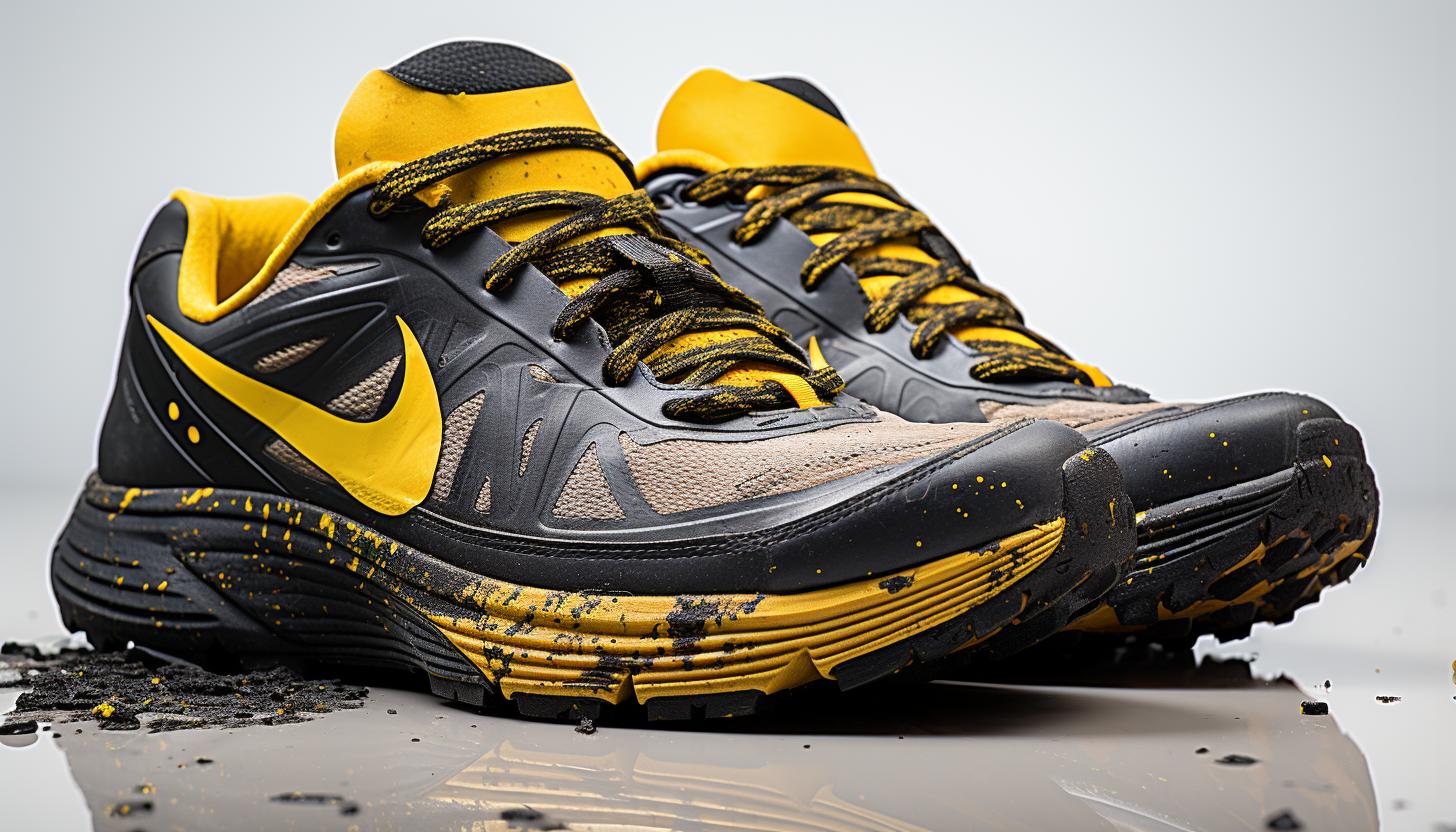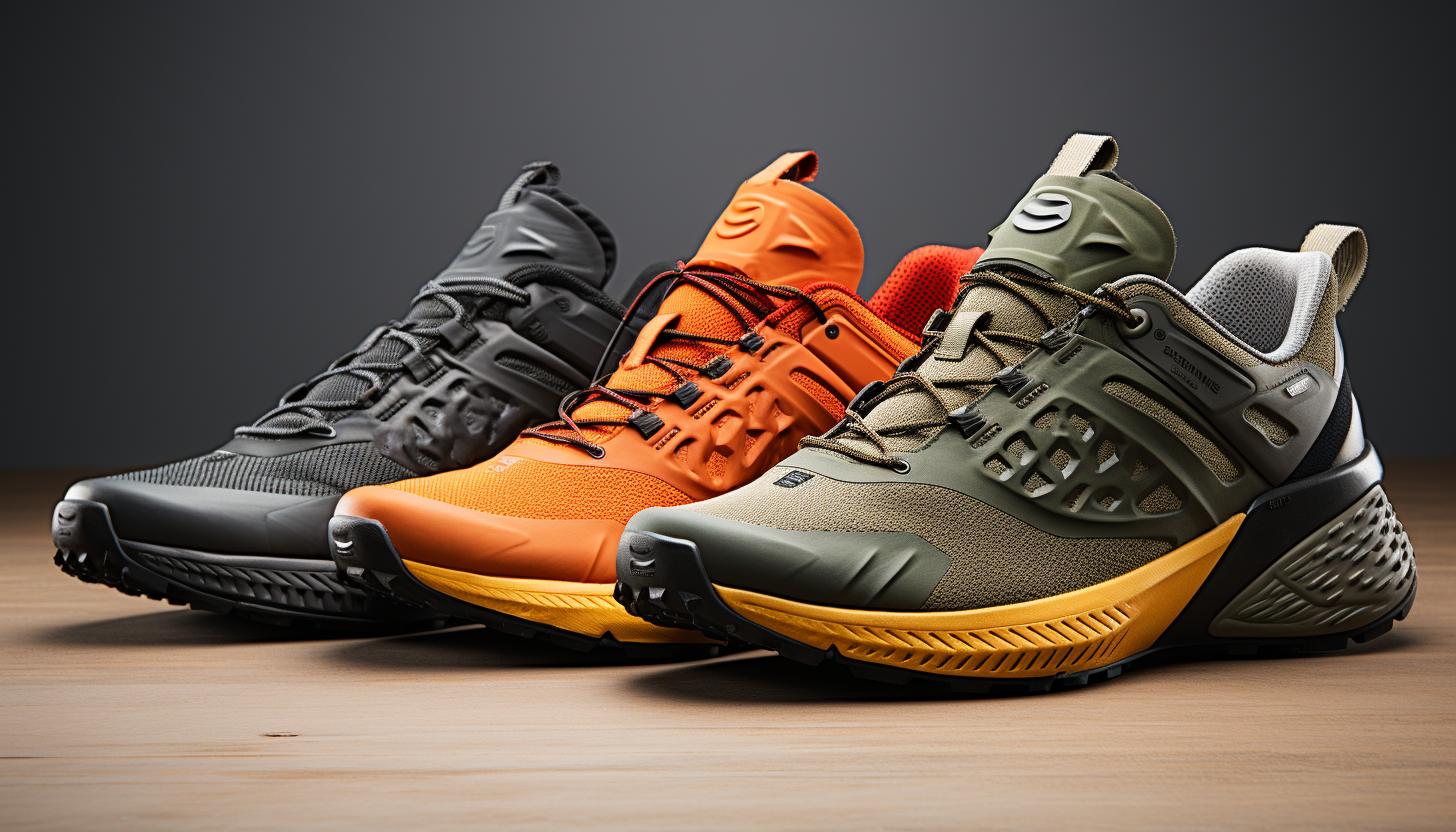Choosing the Right Shoes for Injury Prevention: What to Look for

Are you tired of dealing with injuries caused by improper footwear? Well, look no further! In this article, we will guide you through the process of choosing the right shoes for injury prevention.
By assessing your foot type, understanding shoe cushioning and support, evaluating fit and comfort, and considering durability and traction, you can significantly reduce your risk of getting sidelined.
So lace up your shoes and get ready to make an informed decision that will keep you on top of your game!
Assessing Your Foot Type

Assessing your foot type is crucial when determining the right shoes for injury prevention. Understanding your foot arches and conducting a pronation analysis can provide valuable information to help you make an informed choice.
Foot arches play a significant role in how weight is distributed and absorbed during walking or running. There are three types of foot arches: low, normal, and high.
To assess your foot arches, perform a wet test by wetting your feet and standing on a piece of paper to observe the shape left behind. If you see almost the entire sole with little to no curve, you have low arches. If there is a moderate curve along the inside of your feet, you have normal or neutral arches. And if only the heel and ball of your foot are connected by a thin band, indicating a prominent curve along the inside, then you have high arches.
Next is understanding pronation – how your foot rolls inward when it strikes the ground while walking or running. Pronation can be categorized into three types: overpronation (excessive inward rolling), neutral pronation (optimal alignment), and underpronation (insufficient inward rolling).
By assessing both your foot arch type and pronation analysis, you will gain important insights into finding shoes that offer appropriate support and stability for injury prevention.
Now let’s delve into understanding shoe cushioning and support to further enhance our knowledge in choosing suitable footwear.
Understanding Shoe Cushioning and Support

Understanding shoe cushioning and support is essential in finding the best pair to prevent injuries. When it comes to choosing the right shoes, one important factor to consider is foot pronation. Foot pronation refers to the inward rolling motion that occurs when your foot strikes the ground during walking or running. If you have excessive pronation, it can lead to various issues such as overuse injuries and instability.
To address this, you need shoes with proper cushioning and support. The cushioning of a shoe helps absorb the impact forces generated when your feet hit the ground. It reduces stress on your joints and muscles, minimizing the risk of injuries. Look for shoes with adequate padding in the midsole and heel areas for optimal impact absorption.
Support is equally crucial as it helps maintain stability and alignment of your feet while in motion. A supportive shoe provides structure to control excessive motion, preventing overpronation or supination. This stability enhances overall foot function and reduces strain on your muscles and ligaments.
Now that you understand why cushioning and support are vital for injury prevention, let’s move on to evaluating the shoe’s fit and comfort, which are equally important factors in finding the perfect pair for you.
Evaluating the Shoe’s Fit and Comfort

To ensure a comfortable fit, make sure the shoes aren’t too tight or loose around your foot. When evaluating footwear sizing and comfort, consider the following:
– Proper Sizing: Choose shoes that match the length and width of your feet. Ill-fitting shoes can cause discomfort and increase the risk of injury.
– *Length*: Ensure there is about a thumb’s width between the tip of your longest toe and the end of the shoe.
– *Width*: Check that your foot doesn’t feel cramped or squeezed on the sides. Opt for wider sizes if necessary.
– Shoe Materials: The materials used in shoe construction can affect comfort. Look for breathable materials like mesh or leather to promote airflow and prevent excessive sweat accumulation.
– *Upper Materials*: Shoes with flexible uppers allow natural foot movement while providing support.
– *Cushioning Material*: Select shoes with appropriate cushioning to absorb impact forces during activities.
Considering proper fit and suitable materials will enhance your overall comfort while wearing shoes, reducing the likelihood of discomfort or pain during physical activity.
Moving forward, it’s important to also consider shoe durability and traction to further safeguard against injuries.
Considering Shoe Durability and Traction

When it comes to durability and traction, you’ll want to make sure your shoes can withstand different terrains and provide a secure grip. The materials used in the construction of your shoes play a crucial role in determining their durability. Look for shoes made with high-quality materials such as leather or synthetic fabrics like nylon or polyester. These materials are known for their strength and resistance to wear and tear.
Another important aspect to consider is the technology used in the shoe soles. Advances in shoe sole technology have led to the development of various features that enhance traction and stability. One popular innovation is the use of rubber compounds with specialized tread patterns. These patterns create channels that help disperse water, mud, or debris, preventing them from accumulating on the sole and compromising grip.
Additionally, many shoes now incorporate advanced cushioning systems into their soles. These technologies not only provide comfort but also absorb shock during impact, reducing stress on your feet and joints.
Research studies have shown that both shoe material and sole technology significantly influence durability and traction performance. So when choosing your next pair of shoes, be sure to consider these factors carefully to ensure that you’re getting footwear that will keep you safe on any terrain while providing long-lasting support.
Exploring Specialized Shoes for Different Activities

For each activity you engage in, there are specialized shoes designed to optimize your performance and protect your feet from potential injuries. When it comes to running, having the right pair of specialized running shoes is crucial. These shoes are designed with features such as cushioning, stability, and flexibility to provide optimal support for your feet and reduce the risk of injuries like shin splints or stress fractures.
When it comes to weightlifting, different shoe types come into play. Weightlifting shoes have a firm and non-compressible sole that helps with stability during heavy lifts. They also have an elevated heel that allows for better ankle mobility and improved squat depth. These features not only enhance performance but also minimize the risk of strains or sprains.
To further illustrate the importance of specialized shoes for different activities, consider the following:
– Specialized Shoes for Running:
– Cushioning: Provides shock absorption and reduces impact on joints.
– Stability: Helps control excessive foot motion and prevents overpronation.
– Flexibility: Allows natural movement of the foot while providing support.
– Different Shoe Types for Weightlifting:
– Firm Sole: Enhances stability by minimizing energy loss through shoe compression.
– Elevated Heel: Improves ankle mobility and squat mechanics.
Investing in specialized shoes specific to your activity can make a significant difference in optimizing your performance while reducing the risk of injury. So whether you’re a runner or a weightlifter, be sure to choose the right pair of shoes tailored to your needs.
Conclusion
To ensure injury prevention, it is crucial to choose the right shoes that cater to your specific needs. Assessing your foot type helps you find a shoe with appropriate arch support and stability.
Understanding cushioning and support ensures adequate shock absorption during activities. Evaluating the shoe’s fit and comfort guarantees proper alignment and reduces discomfort.
Considering durability and traction ensures long-lasting performance and grip on different surfaces. Exploring specialized shoes for various activities optimizes performance while minimizing the risk of injuries.
So, remember to make an informed choice when selecting your footwear, prioritizing safety above all else.
Rhetorical literary device used: Repetition (‘injury prevention‘)






